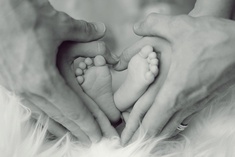
The Attachment Theory
Last updated: Wednesday August 30th, 2023
Report this blog
The attachment theory reflects on how our early childhood's bond with our parents or caregivers influences our future self.
The attachment theory's point is, in a few words, that a strong bond with our parents or caregivers is essential for our development. When we live with someone who trusts us and with whom we have a strong bond, we feel more secure to explore the world and form solid relationships. In the opposite situation, we're always afraid of meeting new people and moving in the globe, because we fear we'll never return to a "safe place". The first type of people tends to be successfull in life, while the other doesn't think much of himself.
We'll start analyzing the types of attachment. While there is only one type of secure attachment, there are three types of insecure attachments:
• Anxious Ambivalent: when a child tries to search for their parents' attention and help, but their parents respond in a predictable way, so the child doesn't show their true feelings.
• Anxious Avoidant: when a child lives with a rather lovely caregiver, who, unfortunately, becomes punitive if the child doesn't behave like they want, so that the child starts avoiding showing their feelings.
• Anxious Disorganized: when a child doesn't receive any form of love from their caregivers, especially if they are punitive: the child starts to see themselves unworthy of love.
When those children become adult, they all have a negative image of themselves, especially the Anxious Disorganized ones. The reason is that the children who have experienced an Anxious Disorganized type of attachment never had someone to call "parents", that's why most of those are orphans.
An organ on top of our kidneys, the adrenal gland, produces adrenaline and cortisol, the stress hormones. The blood pressure goes up, while the heart rate increases. When this happens frequently, it's called toxic stress. The effects of toxic stress aren't encircled in childhood: a weaker immune system results in a major probability of illnesses and healthy diseases when we're adult.
When we explore this theory, we dig deeper in a baby's life. Most of the connections are formed in the first two years of life, when we start to understand the basics of love and family. The problems are various, not just because a kid doesn't know much of the world, but primarily because a kid hasn't learned yet how to express their feelings and anxiety.
